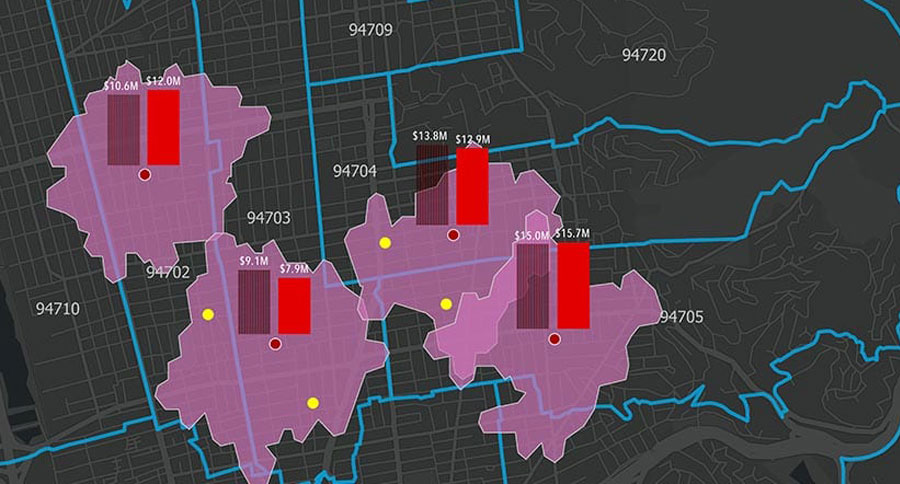
13 Jul Data-Driven Business: Avoiding the Pitfalls
Retailer with hundreds of stores across North America is forecasting next year’s sales in the San Francisco Bay Area. The business, a first-mover in the area, has established a dominant presence with four brick-and-mortar locations. But competitors are expected to open nearby locations within the next year.
Executives recognize that the competitor stores will impact sales, and they want to factor those effects into revenue projections. The analytics team creates a model that probes the consequences of having a competitor store located in the same ZIP code as their store. They display the data on a map to show the relationships between stores. This approach would be applauded by most executive teams. But what if it doesn’t reveal the whole story? What if the data ends up misleading executives, resulting in business decisions that hurt the company strategically and financially?
I’ve seen it happen. Digital transformation has opened new doors for companies, introducing a wealth of information and big data. In this new terrain where data abounds and analysis guides decisions, small missteps can lead an executive—and a business—astray. In this article, we’ll examine how executives can use new information and tools to drive valuable business decisions, while avoiding the pitfalls of one-dimensional analysis.
Data–Driven Leadership
Data-driven decision-making is a hallmark of executive leadership. In a recent PwC survey, 39 percent of senior executives said decision-making at their organizations is “highly data driven,” while another 53 percent characterized their decision-making as “somewhat data driven.” That means over 90 percent of business leaders are using some form of data to drive day-to-day decisions.
But the process of turning big data into data-driven decisions is laced with challenges, and some are easily overlooked. After all, data can mislead. Whether the data is flawed, analyzed incorrectly, or lacks key ingredients, it can lead executives to questionable decisions.
Executive Decisions: Three Data–Driven Business Scenarios
In a world of rapid digital transformation, it is increasingly easy to confuse data with insight. By analyzing the where and even the when behind certain data, executives can add critical elements to business planning. Still, while mapping is a step in the right direction, there are pitfalls to avoid. That’s why every executive should be armed with tools and techniques to convert big data into information—and action.
What are the best techniques for converting data into useful, intelligent business decisions? To answer that question, we’ll explore three business scenarios where datasets, analyzed two ways, yield different results—and could trigger divergent business decisions. While the particulars are hypothetical, each scenario is drawn from real-world analysis.
Unleashing GIS Technology’s potential in every industry
Read more
